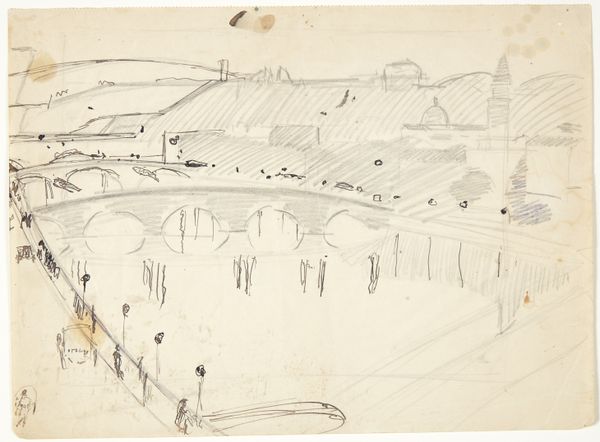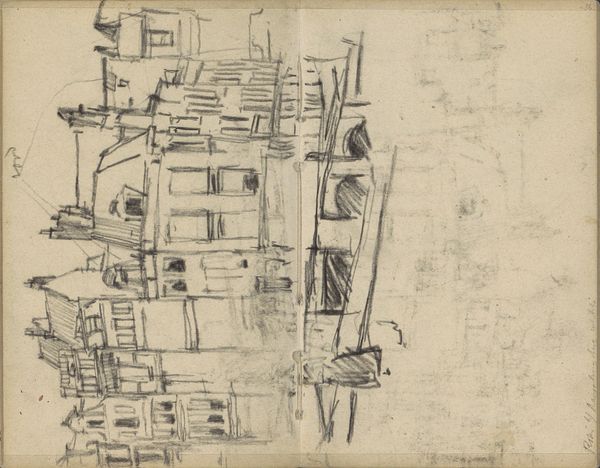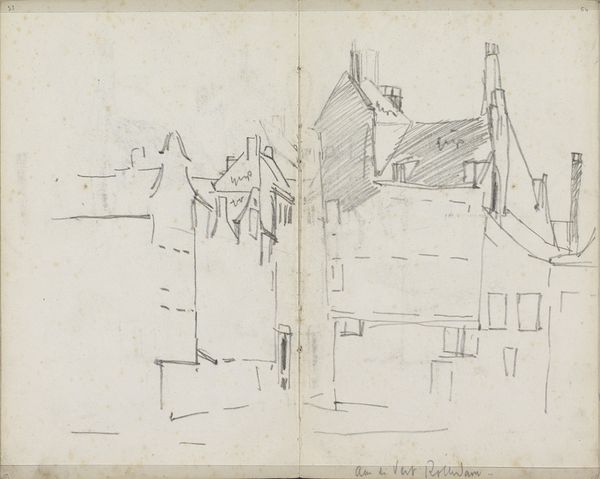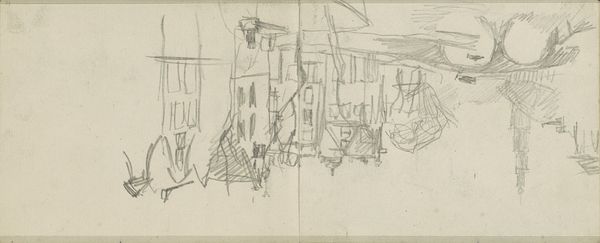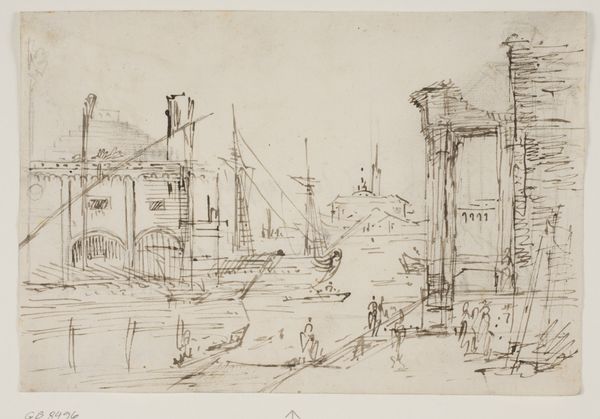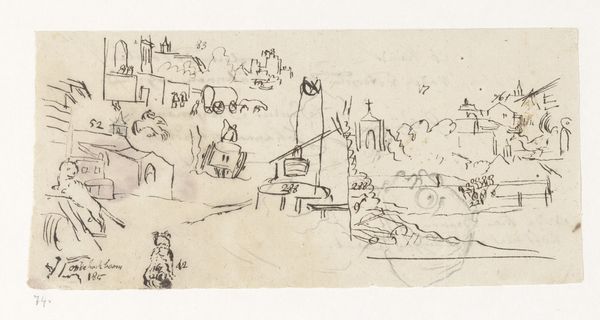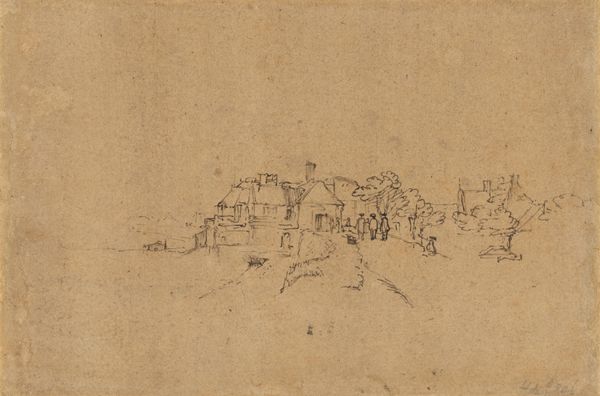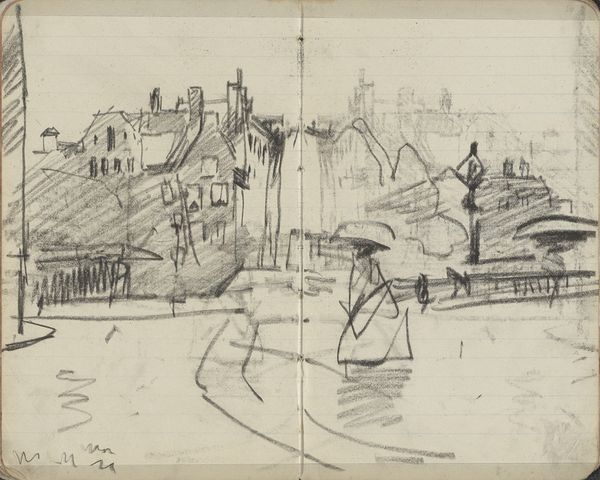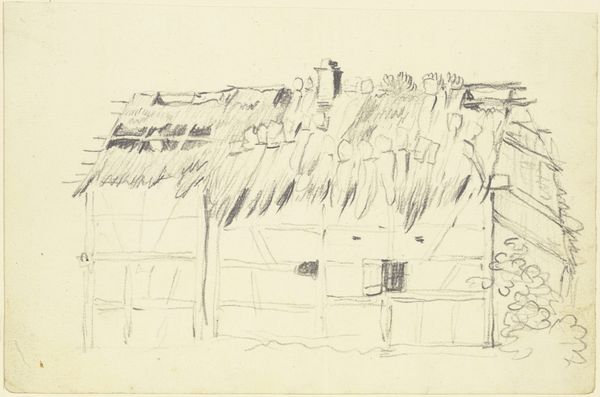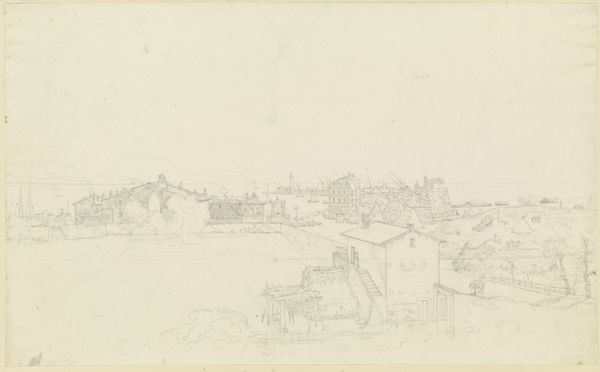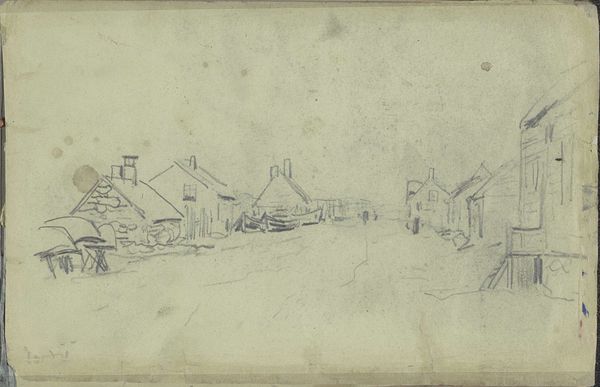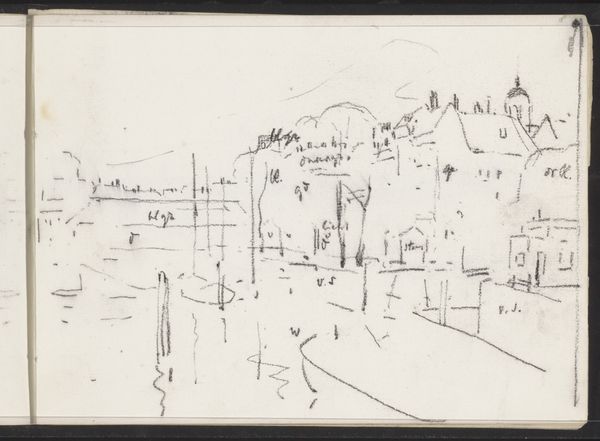
drawing, ink, pencil, architecture
#
architectural sketch
#
drawing
#
ink
#
romanticism
#
pencil
#
cityscape
#
architecture
#
realism
Dimensions: 176 mm (height) x 270 mm (width) (bladmaal)
Editor: This is Albert Küchler's "Rom, via Sistina," created sometime between 1803 and 1886. It's a drawing rendered in pencil and ink. It gives me a nostalgic feeling, almost like a faded memory of Rome. What draws your eye to this piece? Curator: It's interesting you pick up on that sense of faded memory. Notice how Küchler uses line, not just to define the architecture, but almost as a veil. The Via Sistina itself, a major thoroughfare, becomes a stage for figures both present and absent, real and symbolic. Do you see how the lines create depth, but also a kind of permeable barrier between then and now? Editor: I see it! It's like he's capturing not just the buildings, but the feeling of the place. So, what's the significance of the street itself? Curator: The Via Sistina, leading to the Piazza del Popolo, represents a gateway, both physically and metaphorically. Think of the rituals, processions, and everyday lives that have unfolded on that street. Küchler’s drawing is imbued with the weight of history, resonating beyond the architectural details. Can you sense any other meanings in this image? Editor: It's amazing to consider how a simple drawing can hold so much symbolic meaning. Curator: Indeed. Artists often act as conduits, channeling collective memories into tangible forms. I find Küchler’s representation speaks volumes about cultural endurance, despite the passage of time. Editor: This piece really highlighted how architecture, when captured by an artist, is more than just brick and mortar, but a repository of culture. Curator: Precisely! And Küchler reminds us of the potent symbolism held within the everyday scenes that make up a city’s enduring identity.
Comments
No comments
Be the first to comment and join the conversation on the ultimate creative platform.
